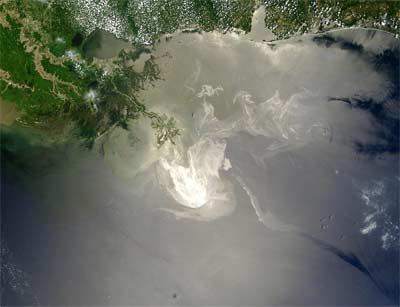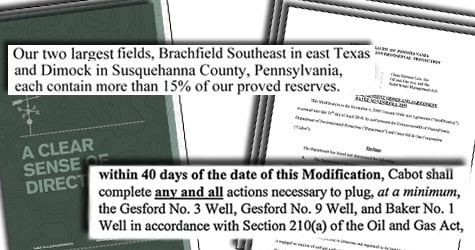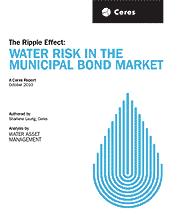Contains the keyword companies
In a speech in Buenos Aires last year, BP Chief Executive Tony Hayward called this "a quiet revolution...in the gas fields of North America."
New techniques like hydraulic fracturing and horizontal drilling are opening up new gas resources that could last the U.S. between 50 and 100 years, he said.
"One field where these techniques were pioneered--the Barnett Shale near Fort Worth in Texas--has almost single-handedly turned around the production of natural gas in the U.S.," Hayward said.
BP made its entry into U.S. shale gas in 2008 when it acquired 90,000 acres of the Arkoma Basin Woodford Shale play and 135,000 acres of the Fayetteville shale from Chesapeake Energy for $2.85 billion in cash.

Photo: UC Santa Barbara Geography Department. The Deepwater Horizon oil spill in the Gulf of Mexico as seen from space by NASA's Terra satellite on May 24, 2010. The spill has yet to be contained and is the worst oil spill in US history.

View of the Macondo well leaking oil in the Gulf of Mexico.
The subject of gas drilling in the Marcellus may be looked at in its historical, legal and scientific contexts. The need to heal the ineffective and mistrustful relationship between environmentalists, the U.S. government and the international energy industry concerning the preservation of American air and water becomes more urgent by seeing images like these.
See: Kara Cusolito. The Nation. "The Next Drilling Disaster".
On Sunday, Sept. 26, a committee of the National Academy of Engineering and National Research Council that is conducting an analysis of the causes of the Deepwater Horizon explosion and oil spill held a public meeting to hear from Mark Bly, group head of safety and operations for BP, and other company representatives about BP's recently released accident investigation report. Also on the agenda were executives from Halliburton and Shell Oil.
- Photos
- Webcast Audio Part 1 (Opening Remarks, BP Presentation)
- Webcast Audio Part 2 (Q&A with Committee and BP)
- Webcast Audio Part 3 (Halliburton Presentation and Q&A)
- Webcast Audio Part 4 (Shell Presentation and Q&A)
- Meeting Agenda
- Project Information
See: "More Questions About BP’s Limited Investigation Into Gulf Disaster".
See: Dave Cohen. Energy Bulletin. "Shale Gas Shenanigans."
See: National Commission on the BP Deepwater Horizon Oil Spill and Offshore Drilling
See: The Questions BP Didn’t Answer
See: Tracking the Oil Spill in the Gulf | Interactive Map
For more on the estimates, see these articles:
May 14: Size of Oil Spill Underestimated, Scientists Say
May 28: Estimates Suggest Spill Is Biggest in U.S. History
June 7: Rate of Oil Leak, Still Not Clear, Puts Doubt on BP
June 10: New Estimates Double Rate of Oil Leak
June 15: Panel Sharply Raises Estimate of Oil Spill
Aug. 2: Gulf Spill Is the Largest of Its Kind
See: Cain Burdeau. "Scientists Find Damage to Coral Near BP Well." AP. Coastal Care. Nov. 6, 2010.
See: Peter Hart. July 2010. "Still Drill, Baby—Despite Spill
Little rethinking of oil after Deepwater disaster." FAIR. (Fairness and Accuracy in Reporting)
See New Book:
Institute of Medicine, Margaret A. Mccoy, and Judith A. Salerno. Assessing the Effects of the Gulf of Mexico Oil Spill on Human Health: A Summary of the June 2010 Workshop. National Academies Press, 2010.
Cabot Oil & Gas Corporation, headquartered in Houston, Texas, is a leading independent North American natural gas producer. The company’s reserves are focused in both conventional and unconventional basins in Appalachia, the Rocky Mountains, the Mid-Continent and the Gulf Coast.
See: Cabot Oil & Gas’s Marcellus Drilling to Slow After PA Environment Officials Order Wells Closed. Lustgarten, Abrahm. ProPublica. (2010).
See: Commonwealth of Pennsylvania DEP takes aggressive enforcement action against Cabot Oil
See: Associated Press. December 16, 2010. The Wilkes-Barre Times Leader. "Gas driller to pay $4.1 million in settlement."
HARRISBURG — The state Department of Environmental Protection has abandoned its plan to force a Houston-based drilling company to pay nearly $12 million to extend a public water line to residents whose wells have been contaminated with methane gas, citing a lack of political support.
Environmental regulators say Cabot Oil & Gas Corp. instead will pay residents of Dimock a total of $4.1 million under a settlement with the company announced late Wednesday. Cabot also has agreed to pay to install whole-house gas mitigation systems in each of the 19 affected homes.
The settlement infuriated residents, who say the DEP caved to political pressure.
See also:
- Legere. Hazards posed by natural gas drilling are not limited to below ground
- Legere. Cabot and DEP clash over Dimock water contamination
- Lippert. Shale Gas Costing 2/3 Less Than OPEC Oil Incites Water Concern
- Lustgarten. Frack Fluid Spill in Dimock Contaminates Stream, Killing Fish.
- Lustgarten. Pennsylvania Orders Cabot Oil and Gas to Stop Fracturing in Troubled County
- McFerrin. Fight Over Gas Wells in Chief Logan Heads to Supreme Court
- Noell. Natural Gas Drilling Threatens Communities in Northeastern United States
- Piette. Water All Around … Or is There?
by Abrahm Lustgarten, ProPublica - April 16, 2010.
More than 15 months after natural gas drilling contaminated drinking water in Dimock, Pa., state officials are ordering the company responsible -- Houston-based Cabot Oil and Gas -- to permanently shut down some of its wells, pay nearly a quarter million dollars in fines, and permanently provide drinking water to 14 affected families.
The order is among the most punitive in Pennsylvania's history and reflects officials' frustrations over a string of drilling-related accidents. The record of spills, leaks and water contamination in Pennsylvania -- several of which are tied to Cabot -- has spotlighted the environmental risks of drilling for natural gas across the country, jeopardized development of the massive Marcellus Shale resource deposit, and contributed significantly to actions by both Congress and the U.S. Environmental Protection Agency to bolster federal oversight of drilling.
"The events at Dimock have been the black eye for the industry and have also been a black eye for Pennsylvania," the state's chief environment official, John Hanger, told ProPublica. "It's been an enormous headache. If Cabot doesn't get this message, the company has got an amazing hearing problem."
CalFrac is one of the companies the U.S. House Committee on Energy and Commerce is investigating on the potential environmental impacts from hydraulic fracturing.
"Hydraulic fracturing operations are constantly improving through advances in technology, which are intended to translate into cost savings and enhanced production for Calfrac’s customers."
According their website, Ceres (pronounced “series”) is a national network of investors, environmental organizations and other public interest groups working with companies and investors to address sustainability challenges such as global climate change.
Ceres also directs the Investor Network on Climate Risk, a network of 90 investors with collective assets totaling about $10 trillion.
See: Ceres. August 5, 2010. "Investors Managing $2.5 Trillion Press Energy Companies to Better Disclose Spill Prevention and Response Plans for Deepwater Wells Worldwide".
"It is important for all companies involved in subsea deepwater drilling to be open and transparent with investors and stakeholders at this crucial historic moment," wrote the investors.
A report published on 3BL Media, Dec. 14, 2010, stated that the request was made in a letter last week from the Investor Network on Climate Risk (INCR), a network of 98 investors with collective assets totaling over $9 trillion. It was sent to the National Commission on the BP Deepwater Horizon Oil Spill and Offshore Drilling, whose final report and recommendations are expected in January. It was signed by Mindy S. Lubber President, Ceres Director, Investor Network on Climate Risk.
See: The Investor Environmental Health Network. 2010. Overview: Hydraulic Fracturing for Natural Gas Development.
See: Before the Big Spill | Mixplex
See: National Commission on the BP Deepwater Horizon Oil Spill and Offshore Drilling | Mixplex
See: Sharlene Leurig, Water Asset Management, Ceres Report. October 2010. "The Ripple Effect: Water Risk in the Municipal Bond Market". Investor Network on Climate Risk. (PDF Download 6.6MB).
This report shows that few participants in the bond market—including investors, bond rating agencies and the utilities themselves—are accounting for growing water scarcity, legal conflicts and other threats in their analyses.
See: Futurism Now
See: H2Oil: An Explanation of the Tar Sands in Alberta
See: Keystone XL Pipeline - Issues
See: As You Sow - Corporate Accountability, Shareholder Action, and ToxicsReduction
Home page of "one of the largest producers of natural gas in the nation and the most active driller of new wells in the U.S."
Follow links on lower right side to See: Dave Spigelmeyer, Vice-President Government Relations, Chesapeake Energy.
"Open Letter to the State of New York", (February 18, 2010) advertisement publshed in Elmira Star-Gazette.
Read between the lines at The Fighting 29th, a New York State blog, home to former Congressman Eric Massa who resigned in March 2010.
See also: Chesapeake Energy: Fact Sheets On Horizontal Drilling, Hydraulic Fracturing and Water Usage. Chesapeake Energy's Media Resources Page includes: Chesapeake (Chesapeake). 2009a. Hydraulic Fracturing Fact Sheet, May 2009. Submitted to U.S. House of Representative Committee on Natural Resources.
...Open and honest communication, a safe working environment, ethical business practices and good neighbor initiatives are all an important part of how we do business each and every day.
Chief's gas well in Moundsville, West Virginia exploded June 7, 2010. Read the report from Pittsburgh Tribune Review.
Chief's most recent focus has been the development of the Marcellus Shale, a formation that runs from the southern tier of New York, through the western portion of Pennsylvania into the eastern half of Ohio and through Maryland and West Virginia. Chief currently holds more than 580,000 acres in Appalachia.
See: New York Times. Conoco, BP, Caterpillar Leave Climate Coalition. Feb. 16, 2010.
ConocoPhillips, Caterpillar Inc. and BP America have left the U.S. Climate Action Partnership, a coalition of more than two-dozen companies and environmental groups lobbying Congress to pass greenhouse gas emissions cap-and-trade legislation.
From Conoco Phillips Web Page: Remediation
We give serious attention to our duty to restore properties impacted by our operations. Our responsibility for remediation can arise from prior contamination on properties we subsequently acquired, contamination of properties we currently own, or contamination of previously owned properties for which we retained individual or joint responsibility for cleanup.
We completed remediation on more than 300 sites in 2008, and currently are restoring more than 3,600 properties in various locations around the world.
CNX Gas - (a CONSOL Energy subsidary), is the largest producer of natural gas in the Appalachian Basin.
A world record was set by CNX Gas for drilling the most cumulative feet with a single drill bit.
CONSOL Energy purchased the naming rights to the new arena for the Pittsburgh (Pa.) Penguins. CONSOL Energy Center is expected to open its doors in 2010.
On March 15, 2010, CONSOL announced the purchase of Dominion’s Exploration and Production business for $3.475 billion.
According to CONSOL, Dominion Exploration and Production is known as “one of the oldest and most active drillers in Pennsylvania and West Virginia”.
The transaction includes 1.46 million acres for oil and gas drilling with over 9,000 already-producing wells.
Sourcewatch notes that this transaction includes 491,000 acres of land in the Marcellus shale formation of Pennsylvania and West Virginia, and almost triples the amount of land rights CONSOL owns in the Marcellus area.
According to CONSOL’s press release, this purchase will make the company the largest producer of natural gas in the Appalachian basin and give CONSOL “a leading position” in the Marcellus area.
Note: The following articles are summaries only:
See: Consol To Pay $1.4M To End Coal Mining Pollution Suit
See: Va. Landowners Sue Consol Over Coalbed Methane


















